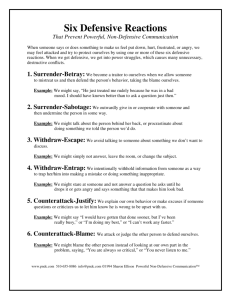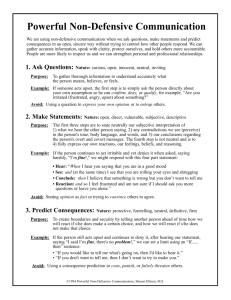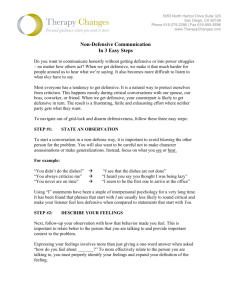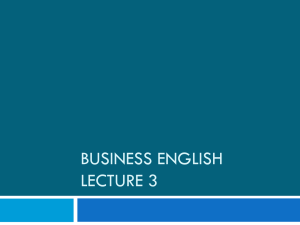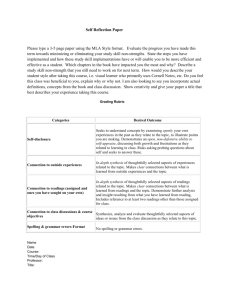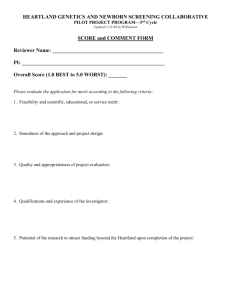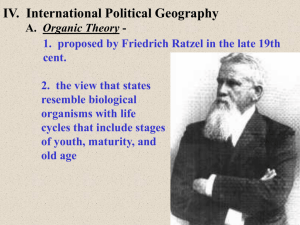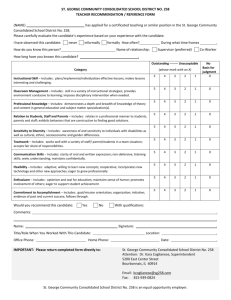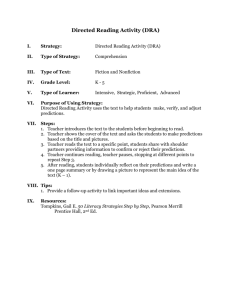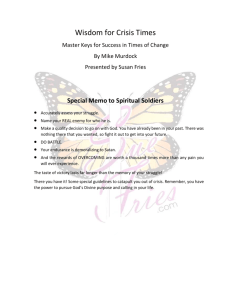POWERFUL NON-DEFENSIVE COMMUNICATION With Sharon
advertisement
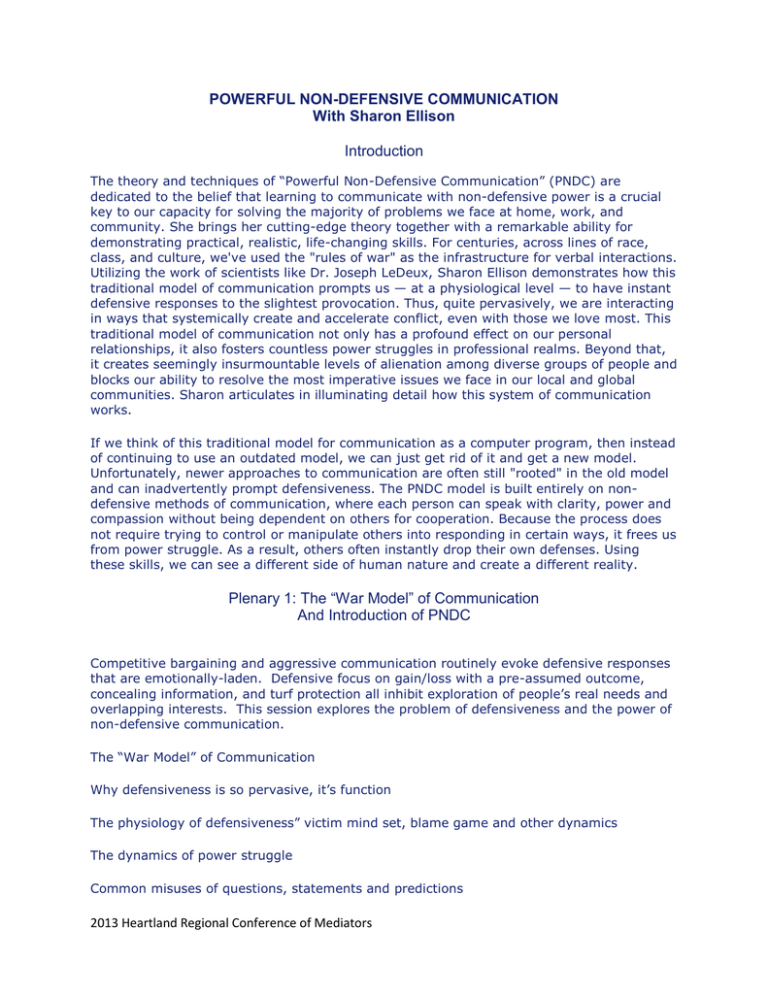
POWERFUL NON-DEFENSIVE COMMUNICATION With Sharon Ellison Introduction The theory and techniques of “Powerful Non-Defensive Communication” (PNDC) are dedicated to the belief that learning to communicate with non-defensive power is a crucial key to our capacity for solving the majority of problems we face at home, work, and community. She brings her cutting-edge theory together with a remarkable ability for demonstrating practical, realistic, life-changing skills. For centuries, across lines of race, class, and culture, we've used the "rules of war" as the infrastructure for verbal interactions. Utilizing the work of scientists like Dr. Joseph LeDeux, Sharon Ellison demonstrates how this traditional model of communication prompts us — at a physiological level — to have instant defensive responses to the slightest provocation. Thus, quite pervasively, we are interacting in ways that systemically create and accelerate conflict, even with those we love most. This traditional model of communication not only has a profound effect on our personal relationships, it also fosters countless power struggles in professional realms. Beyond that, it creates seemingly insurmountable levels of alienation among diverse groups of people and blocks our ability to resolve the most imperative issues we face in our local and global communities. Sharon articulates in illuminating detail how this system of communication works. If we think of this traditional model for communication as a computer program, then instead of continuing to use an outdated model, we can just get rid of it and get a new model. Unfortunately, newer approaches to communication are often still "rooted" in the old model and can inadvertently prompt defensiveness. The PNDC model is built entirely on nondefensive methods of communication, where each person can speak with clarity, power and compassion without being dependent on others for cooperation. Because the process does not require trying to control or manipulate others into responding in certain ways, it frees us from power struggle. As a result, others often instantly drop their own defenses. Using these skills, we can see a different side of human nature and create a different reality. Plenary 1: The “War Model” of Communication And Introduction of PNDC Competitive bargaining and aggressive communication routinely evoke defensive responses that are emotionally-laden. Defensive focus on gain/loss with a pre-assumed outcome, concealing information, and turf protection all inhibit exploration of people’s real needs and overlapping interests. This session explores the problem of defensiveness and the power of non-defensive communication. The “War Model” of Communication Why defensiveness is so pervasive, it’s function The physiology of defensiveness” victim mind set, blame game and other dynamics The dynamics of power struggle Common misuses of questions, statements and predictions 2013 Heartland Regional Conference of Mediators Using a question to make a statement of own opinions, feelings, beliefs Using a question to “entrap” another Using statements to express own personal opinion as “universal truth” Using statements to try to persuade other to agree with own feelings and beliefs Threatening negative consequences in order to try to force others to comply Predicting appeal consequences (bribes) to try to force others to comply Shifting the Power Dynamics: comparison of the War Model and PNDC The effects of Non-Defensive Communication Separateness: each person maintains clarity of his or her own positions and avoids a power struggle Disarming: each person is likely to respond with openness and sincerity Clarification: each person has opportunity to affirm, deny or qualify a position Accountability: each person is accountable for what he or she says and does Quantum leaps: each person has the opportunity to make leaps in personal growth The tools of non-defensive communication Questions Nature: curious, open, innocent, neutral, inviting Function: to gather information Statements Nature: open, vulnerable, direct, subjective, descriptive Function: to provide information Predictions Nature: protective, foretelling, neutral, definitive, firm, dual in nature Function: to provide security through predictability 2013 Heartland Regional Conference of Mediators Plenary 2: The Use of Non-Defensive Questions Questions can be used as weapons to interrogate others, increasing the conflict. Questions can be asked in a way that turns them into statements that put others on the defensive. This session describes ways to ask non-defensive questions to provide insight to more clearly understand the perceptions of others. Content Questions Who, what, when, where, how and why Inverting – turn another’s statement into a question What do you mean – asking for clarification Compare and contrast – opposites, variations, exceptions Contradictions Relation in time: past, present, future First, second & third person: to gain perspective from different angles Value, emotion, reason and behavior: what a person believes, feels, thinks, does Process Questions Asking about tone of voice and body language Asking about a specific attitude (such as superiority or pessimism) Asking about motivation and intention 2013 Heartland Regional Conference of Mediators Plenary 3: The Use of Non-Defensive Statements The adversarial model for communication is based on the transmission of “truth” to others. Statements of opinion are made as statements of “Fact.” Disagreement is considered misguided and is discredited. Persuasion may proceed from coaxing to coercion. This session discusses the disarming effect of non-defensive statements to directly address needs, desires and goals without suspicion, secret-keeping or domination. Compare and contrast traditional methods with non-defensive methods The dynamics of voice tone and body language Four formats for a non-defensive statement Overt messages: reporting what is heard Covert messages: observations about what is seen Interpreting cause or motive Own reactions: thoughts, feelings, beliefs, behavior 2013 Heartland Regional Conference of Mediators Plenary 4: The Use of Non-Defensive Predications Predictions of dire consequences or rewards used to threaten or coax others to comply with our will and dictate their choices increases defensiveness. The ensuing power struggle erodes trust and undermines relationships. This session will discuss ways to neutralize the power struggle through the use of non-defensive predictions that offer accurate and specific information so others can make an informed choice. Non-defensive predictions define boundaries and respect the right of others to make independent choices while holding everyone accountable to foster a new kind of security with themselves and their relationships. Comparison and contrast of traditional and non-defensive methods of prediction Characteristics of an effective prediction The consequences are as small as possible Others have opportunity to control the duration of any negative consequences The consequences are self-contained The prediction has no foreseeable ramifications we cannot tolerate Two types of prediction that create greater respect and reciprocity Limit-setting: “if-then” tells others how you will respond to various choices they might make in a given situation Challenge-choice: “if-then: tells others the consequences you believe they will experience as a consequence of certain choices “ 2013 Heartland Regional Conference of Mediators
